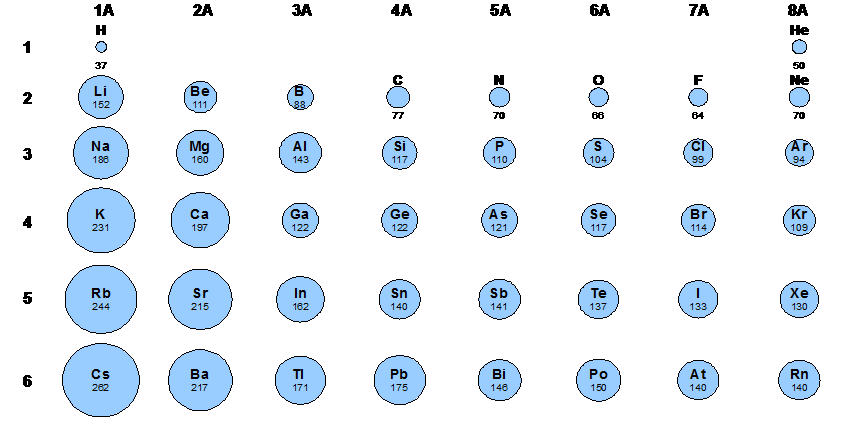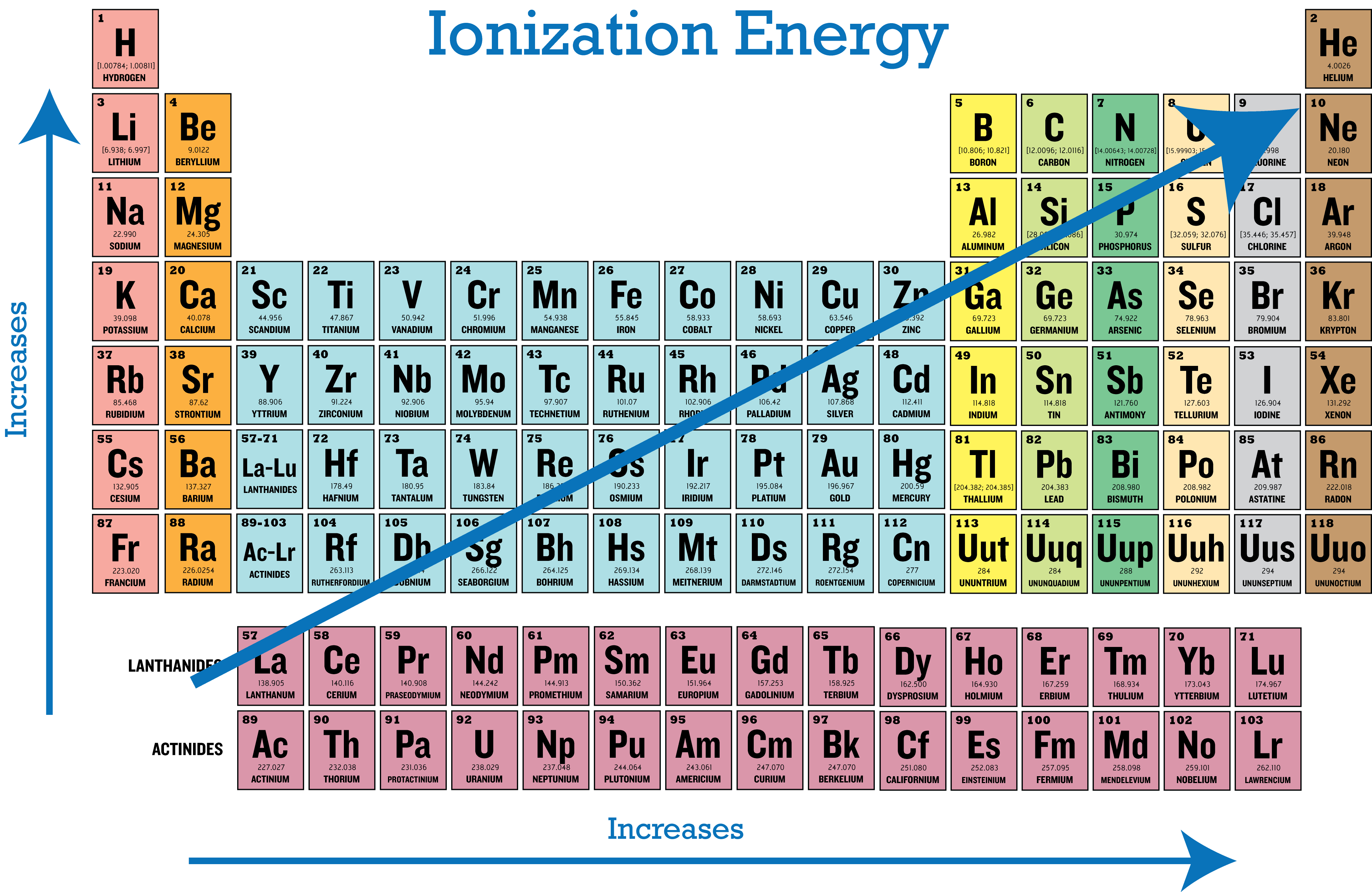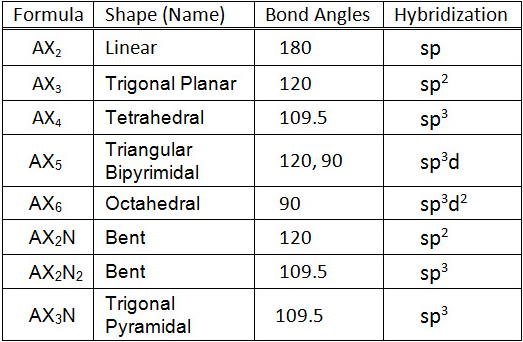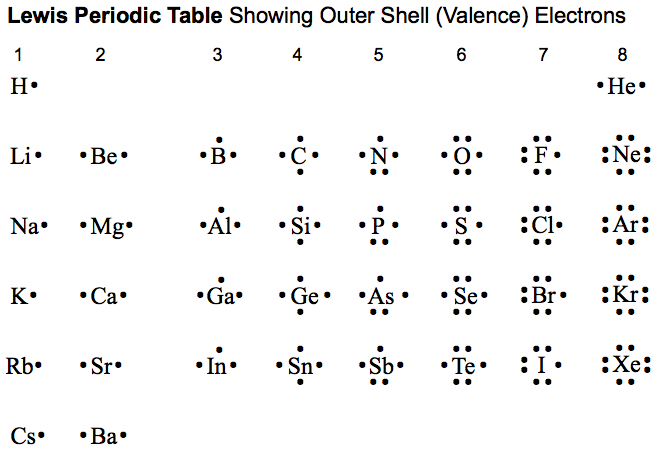In class today we learned about four different periodic trends. The first periodic trend we learned was atomic size. As you move down a group, the atoms tend to get larger, and as you move across a period from left to right, the atomic size decreases. The first part of this trend occurs because electrons are being added to larger orbitals. The second part of this trend is due to the fact that we are adding protons without much of an increase in shielding. With more protons being added, the nuclear charge becomes greater causing orbiting electrons to pull more toward the nucleus.

The next periodic trend we learned was over ionization energy. Ionization energy is the energy needed to remove an electron from a gaseous atom. When this electron is removed from the gaseous ion it results in the formation of a cation. Ionization energy occurs each time an electron is removed, meaning their are multiple sets of ionization energies. For this trend, the ionization energy increases as you move up and to the right across the periodic table.

Electron affinity was the next periodic trend we went over in class. Electron affinity is known as the ease with which an electron may be added to an atom, forming an anion. Since some atoms give off energy when an electron is added, some electron affinities are negative. The periodic trend for electron affinity is an increase as you move up and to the right on the periodic table.

The last periodic trend we learned in this lecture was on electronegativity. Electronegativity is the tendency of an atom to draw electrons toward itself when it's chemically combined with another element. An important thing to remember about electronegativity is that there are no units of measurement. The relative trend for electronegativity is an increase as you move up and to the right on the periodic table, excluding noble gases.
 http://chemwiki.ucdavis.edu/Core/Inorganic_Chemistry/Descriptive_Chemistry/Periodic_Trends_of_Elemental_Properties/Periodic_Trends
http://chemwiki.ucdavis.edu/Core/Inorganic_Chemistry/Descriptive_Chemistry/Periodic_Trends_of_Elemental_Properties/Periodic_Trends








